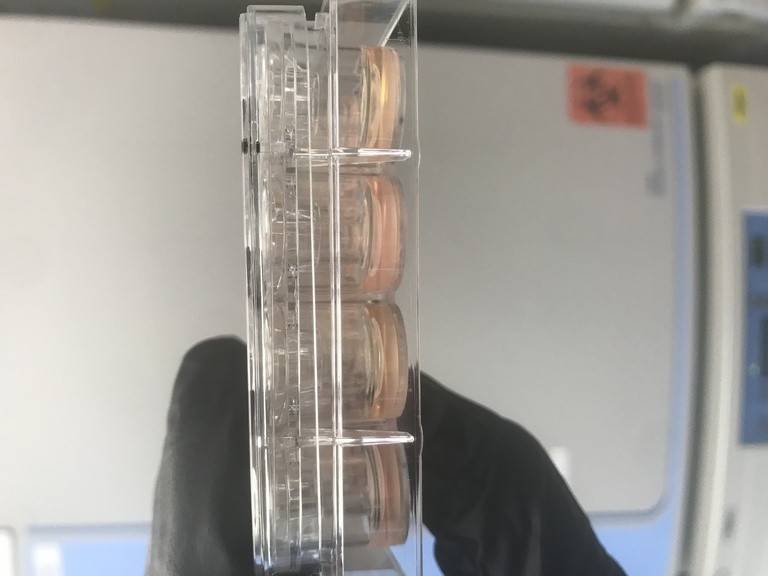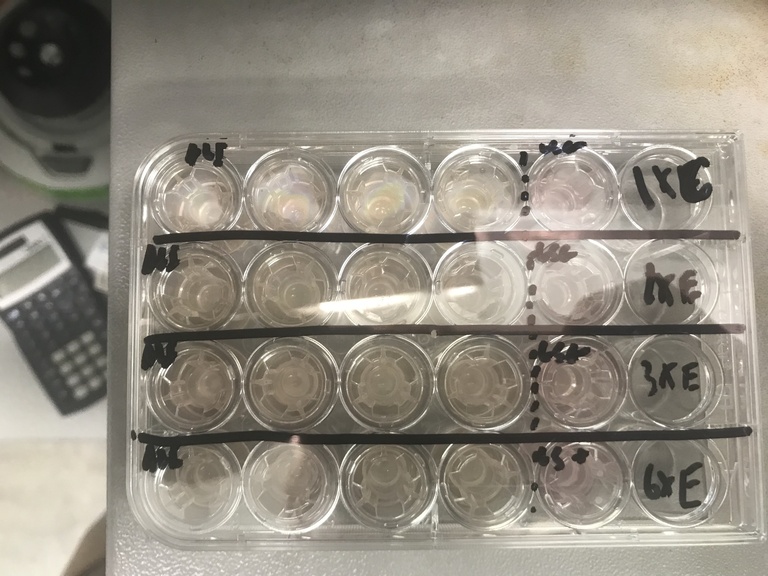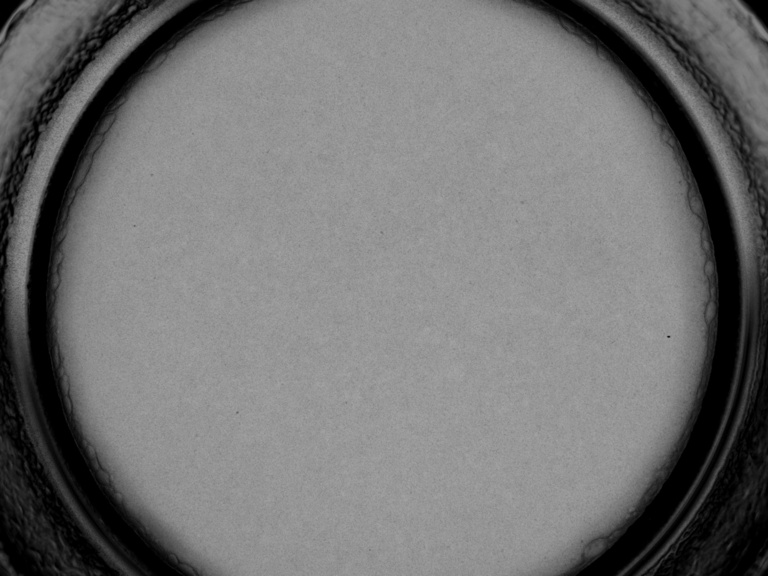
Ussing chambers.
Ussing Chamber
The Ussing chamber technique, developed by Danish physiologist Hans Ussing in the 1950s, was originally designed to investigate mechanisms of ion transport across frog skin. Ussing integrated electrophysiological tools into the technique, paving the way for precise measurement of transepithelial voltage, current, and conductance. This pioneering method laid the foundation for modern studies of epithelial physiology.
Today, Ussing chambers combined with electrophysiology are widely used to quantify ion transport across epithelial barriers. By mounting tissue or cell monolayers between two chambers and applying a voltage, researchers can measure short-circuit current, which reflects the net movement of ions driven by active transport mechanisms. Alternatively, epithelia can be studied without an applied voltage to model epithelial transport under physiological voltage conditions. In either approach, a voltage or current pulse will provide the transepithelial conductance—a measurement of the ease of ion flow through the epithelium. Overall, the technique enables detailed analysis of transport proteins, ion channels, and the effects of cell signaling, pharmacological agents, or genetic modifications.
For further reading:
Hamilton KL. Ussing's "Little Chamber": 60 Years+ Old and Counting. Front Physiol. 2011
Cell Culture
Culturing human airway epithelial cells provides a powerful tool for investigating epithelial function in health and disease. Culturing airway epithelial cells at an air–liquid interface models key features, such as ion transport properties, ciliation, and airway epithelial cell types. The in vitro systems allow us to produce knockout and transgenic models using human epithelia. The genetic variability among different cell donors enhances the reproducibility of our laboratory’s findings.
For further reading:
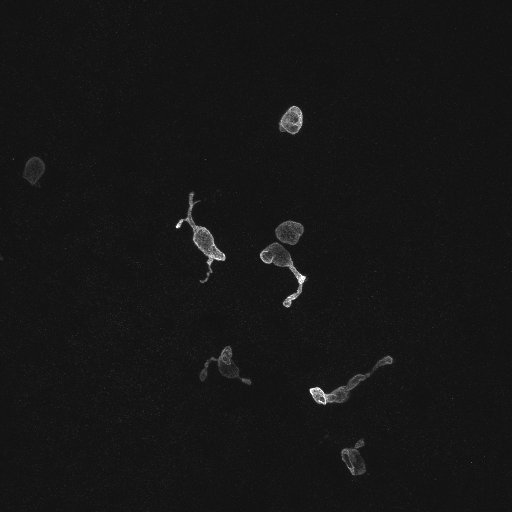
Labeled Ionocytes in an immunofluorescence slide.
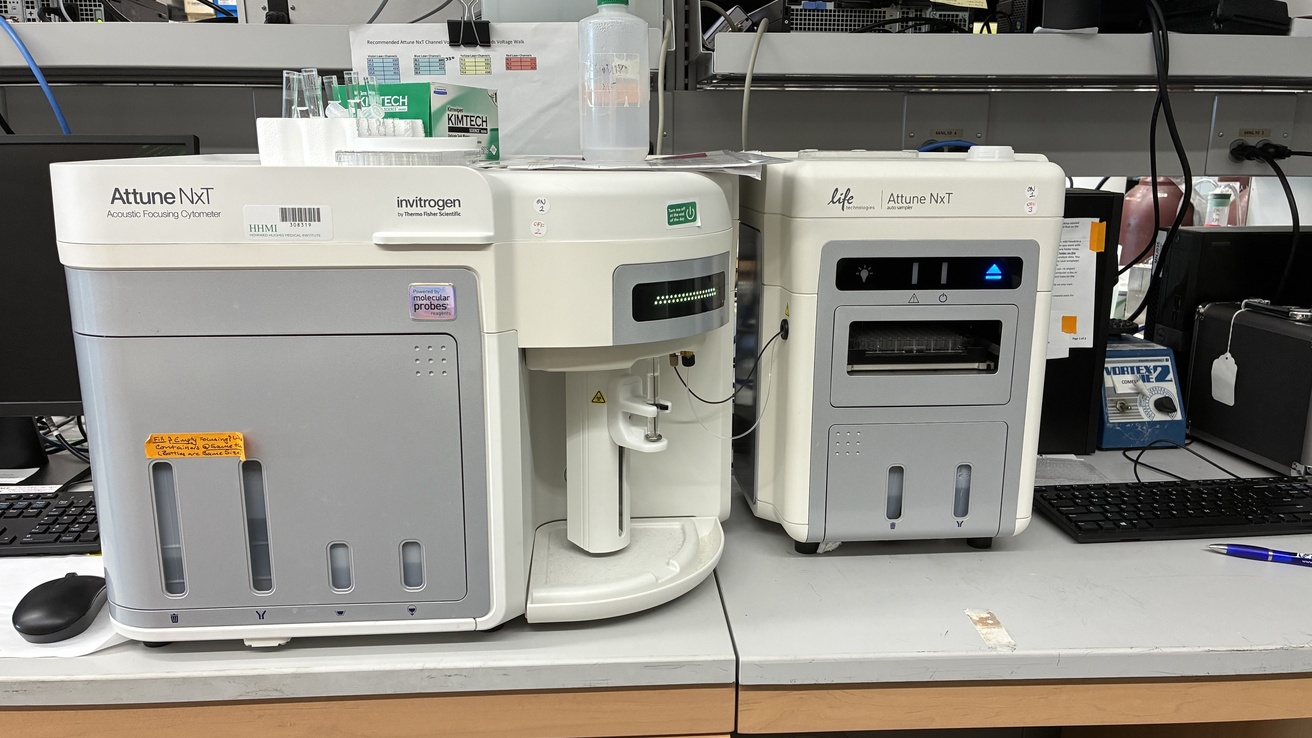
Attune flow cytometer
Confocal Microscopy & Flow Cytometry
We use microscopy combined with immunofluorescence to locate proteins that are polarized in epithelial tissues. By utilizing confocal microscopy, we can pinpoint which proteins are expressed in specific cell types that make up an epithelium. Flow cytometry scales up traditional microscopy experiments so that we can quantify the cell types of an epithelium. Additionally, we incorporate microscopy alongside genetically encoded and chemically based ion-sensitive fluorophores to monitor ion concentrations during live-cell imaging experiments.
For further reading:
